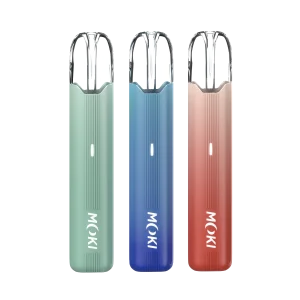The Impact of New Tax Regulations on Unstamped Vapes in Canada
Recently, the Canadian Ministry of Finance has unveiled draft regulations that will significantly affect the vape products industry, particularly focusing on the taxation of unstamped vapes. These regulations are poised to reshape the vaping landscape in Canada, influencing both the market and consumers. Let’s delve into the details of these regulations and their implications.

Main Highlights of the Vape Tax Draft
The proposed bill outlines several key points that will impact the production and sale of vape products in Canada. Here’s a breakdown of the main contents of the draft:
- Excise Tax Implementation: All vape products manufactured or imported into Canada will be subject to excise taxes based on their use and location of sale in specific provinces.
- Designated Provinces: Provinces like Ontario, Quebec, the Northwest Territories, and Nunavut are designated for this new taxation policy.
- Consumption Tax on Unstamped Vapes: A consumption tax will also be levied on unstamped vapes when sold in the aforementioned designated provinces.
- Transition Period: The regulation includes a transition period from July 1 to September 30, 2024, to ease the implementation of a coordinated vape tax system.
- Grace Period: Relevant regulations will not apply to vape products under certain circumstances before October 1, 2024, providing a grace period for businesses to adjust.
For more detailed information about the Draft Regulations, you can visit the Canada government website.
The Broader Impact on the Vape Market and Consumers
The release of this draft regulation has attracted widespread attention, particularly from industries and consumer groups related to vaping products. As vapes grow in popularity in the Canadian market, this regulation is expected to have a profound impact on both the market and consumers.
MOKI’s Perspective as a Vape Manufacturer
As a leading vape manufacturer, MOKI has several observations and concerns regarding the draft regulations. The new financial considerations introduced by the draft regulations are a significant development for the industry. While taxation is a common practice, the tax framework must be fair and reasonable, reflecting the potential harm reduction of vapes compared to traditional cigarettes.
Affordability and Transition for Adult Smokers
Most vape manufacturers, including MOKI, hope for a balanced approach that considers the affordability of these products for adult smokers looking to transition from traditional cigarettes. The affordability factor is crucial to ensure that vape products remain accessible to those who need them as part of harm-reduction efforts.
Collaboration for a Sustainable Vaping Market
Collaboration between vape manufacturers, regulators, and public health officials is vital. This collaboration can help ensure that taxation policies support harm-reduction efforts while maintaining a competitive and sustainable vaping market in Canada. It’s essential to strike a balance between regulation and the growth of the industry to protect public health and encourage a shift towards less harmful alternatives to smoking.
The Future of Unstamped Vapes in Canada

The future of unstamped vapes in Canada is uncertain, with the new regulations set to introduce significant changes. The industry, regulators, and public health officials must work together to navigate these changes, ensuring that the competitive and sustainable vaping market is preserved. This collaboration is key to supporting harm-reduction efforts and providing affordable options for adult smokers seeking alternatives to traditional cigarettes.
The new draft regulations on the excise tax on vape products in Canada mark a pivotal moment for the industry. It’s crucial for all stakeholders, including MOKI, to engage in constructive dialogue and work towards a solution that balances public health goals with the growth and sustainability of the vaping market. As the regulations evolve, the focus should remain on creating a competitive and sustainable vaping market that supports harm-reduction efforts and remains accessible to adult smokers.
For those interested in learning more about the implications of these regulations and how they might affect the vaping industry, consider the following resources:
- A detailed analysis of the draft regulations and their potential impact on the affordability of vape products.
- Insights into how collaboration between manufacturers, regulators, and public health officials can lead to balanced taxation policies.
- Discussions on the importance of maintaining a competitive vaping market to support harm-reduction efforts.
By understanding these aspects, stakeholders can better prepare for the changes brought about by the new regulations and work towards a future where vaping products contribute positively to public health.









